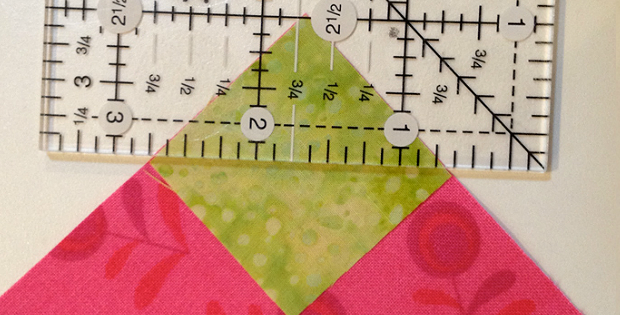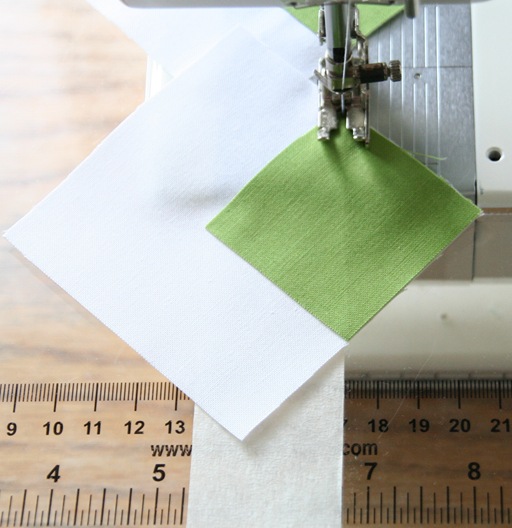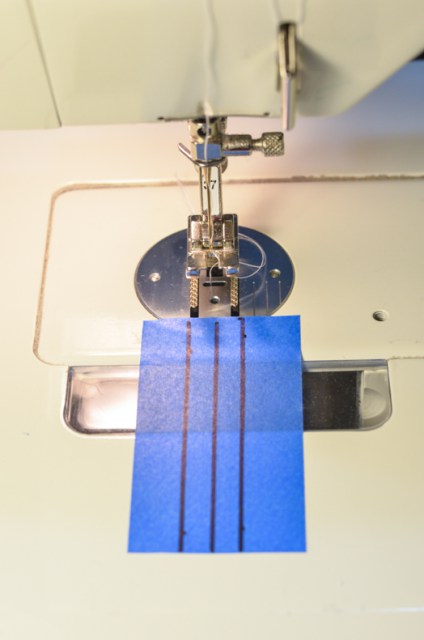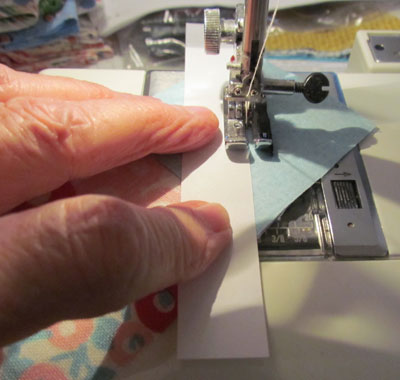Time-Saving Methods for Stitch-And-Flip and HSTs

Three Options to Choose From to Speed Up Piecing!
Stitch-and-flip is a time-saving method that also yields accurate results. There’s no piecing of biased edges, as can happen when triangles are cut before stitching, therefore no need to deal with possible stretching.
However, most patterns advise drawing a line along the stitching line before sewing (get tips for drawing lines on fabric here). That can become tedious quickly when you have a lot of sections to piece. Many quilters are tempted to skip it, often with undesirable results.
Clever quilters use tape (or cardboard) instead. It’s quicker and, with careful “steering”, can be just as accurate.
Allison from Cluck Cluck Sew shows one method for using this time-saving method. Her article goes on to explain the full stitch-and-flip process.
This method can also be used for making two half-square triangles (HSTs) from two squares of fabric. You’ll want to position the tape a little differently than in the example above and mark guidelines.
Once the tape is in place you can use it for stitch-and-flip also. Notice how the tape goes nearly to the feed dogs for optimal accuracy.
The HST process is explained in an article from April Rosenthal.
If you like this tape option, Allison from Cluck Cluck Sew has created tape that is already marked. The guidelines are perfectly spaced and it saves you from having to make your own. Get it here.
Donna Amos uses a strip of cardboard for stitch-and-flip. She lays it on top of the pieces to serve as a guideline for sewing.
It’s a clever idea, and it may have other uses that we haven’t discovered yet.
Image Source: The image at the top of the page is from Quilting Company.

















